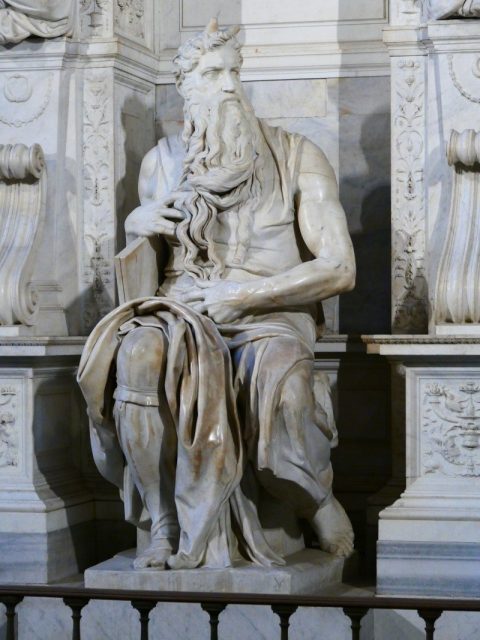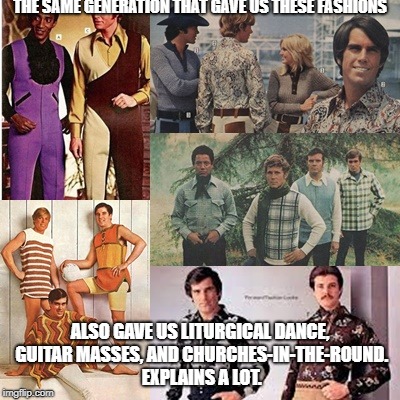
Approximately 1300 BC
Mr. Moses
1 Mt Nebo Lane
Pisbah, Plains of Moab
Dear Mr. Moses:
Thank you for sending your manuscript, Exodus, to Promised Land Publishing. However, it doesn’t meet our needs at this time. Or at any time, for that matter. In all honesty, of all the submissions I read each year, yours is the worst I have ever had the misfortune of editing. Actually, I take that back. Gilgamesh Vs. The Zombie Warriors of Uruk was far worse, but at least that technically followed some basic literary rules.
I’m breaking protocol on your behalf, Mr. Moses, and returning your manuscript, complete with my notes. This doesn’t mean I’m suggesting you rewrite it. Maybe by seeing your mistakes, you’ll be dissuaded from pursuing a writing career, and stick to what you know best: tending sheep, leading people through a desert, speaking with God…
I’ve reprinted several passages as examples. Your text is in black; my notes are bracketed in blue.
One day [describe the day: was it hot? Had it just rained? Was it breezy? You have to draw your reader into the events here with imagery!], when Moses had grown up [how old? 15? 25?] he went out to his people and looked on their burdens [you gotta give me more here – describe the scene. Show, don’t tell! What does he see when leaving the palace? Does he wander through the marketplace? Set up the contrast between his privileged life and the poverty of ‘his people’. Show the burden of slaves working in the mud pits, of carrying straw on their backs. Show Moses’ feelings at seeing the slaves struggle to keep up. Is there someone he recognizes, that evokes pity? Is there some slave girl he has feelings for?]; and he saw an Egyptian beating a Hebrew [again, show don’t tell!!!!], one of his people [we’ve established that – doesn’t bear repeating]. He looked this way and that, and seeing no one [huh? How is this possible? All these slaves and overseers, and no one else is around? Describe this scene to make it more believable!!!] he killed the Egyptian [four words for a fight to the death? Action!! You need to show the reader what’s happening here!!] and hid him in the sand. [Did the Hebrew help him? Did he swear him to silence? Did the guy even say thanks??] When he went out the next day [that’s it? No meditation on this murder? No regret, or pride in exacting justice? He just offs the Egyptian, goes home, and goes out the next day??? I’m beginning to think Moses is a psychopath…], behold, two Hebrews were struggling together; and he said to the man that did the wrong [how do we know this? Who are these two men? Are they brick carriers? Mud men? Why were they fighting? Obviously Moses saw it start, because he knows who was wrong!], “Why do you strike your fellow?” He answered, “Who made you a prince and a judge over us? Do you mean to kill me as you killed the Egyptian?” [Wha—-? This is the same guy he helped the day before? Or is it someone different? I can’t tell. Out of all those 1000’s of slaves, he just *happens* to come across the same guy? Didn’t Moses recognize him? You can’t have coincidences like this without some believable explanation. Not good.] Then Moses was afraid, and thought, “Surely the thing is known.” [You need to build up the suspense before hand. More tension. The reader ought to have info that Moses doesn’t, so they can see the noose tightening around him, and wonder if he will escape. You’re just springing this on the reader with no foreshadowing, and the reader won’t care what happens to him.] When Pharaoh heard of it, he sought to kill Moses [How did the Pharaoh hear of it? Again – I can’t repeat this enough! – SHOW DON’T TELL!!!!]
But Moses fled from Pharaoh, and stayed in the land of Midian [Huh? Just like that? How did he flee? Did he steal a horse? Take a chariot? On foot? Leave under the cover of darkness? Did he have to elude palace guards? Did he even say good-bye to his mother? You got a guy wanted by the Pharaoh, and he *just* flees???]; and he sat down by a well [Come on. Really?] Now the priest of Midian [does he have a name?] had seven daughters [do they have names?]; and they came and drew water [do they see Moses? Does he talk to them? Do they talk to him?], and filled the troughs to water their father’s flock. The shepherds came [What shepherds? Who are these guys? How many are there? Are they rivals? Former employees out for revenge? Give these shepherds a background so that the reader will care what happens to the seven daughters!] came and drove them away; but Moses stood up and helped them [helped who? The daughters or the shepherds? Unclear…], and watered their flock [This is confusing. The girls ran off and just left their flock? Does this happen regularly to them?]. When they came to their father Reuel [Finally! The name of another character!], he said “How is it that you have come so soon today?” [So…I take it the shepherds who harassed the daughters never did that before? This is the first time it’s ever happened? This part of the story needs so much work and development…] They said “An Egyptian delivered us out of the hand of the shepherds, and even drew water for us and watered the flock.” [But…but they were driven off just 3 lines ago!! How did they know this? Did they hide somewhere and watch?] He said to his daughters, “And where is he? Why have you left the man? [I was thinking the same thing, but okay.] Call him, that he may eat bread.” And Moses was content to dwell with the man [Just like that? Give the reader more of the conversation, of what Moses tells the man about why he left Egypt – set up conflict! Perfect opportunity here!], and he gave Moses his daughter Zipporah. She bore a son [What, right away? What’s happened during those nine months or so? Develop Zipporah a bit, and his daily life – for instance, what ever happened to the shepherds?], and he called his name Gershom; for he said “I have been a sojourner in a foreign land.” [Nice touch – need more like this!]
…
Now Moses was keeping the flock of his father-in-law, Jethro, the priest of Midian [Wait – I thought the guy’s name was Reuel! Which is it?]; and he led his flock to the west side of the wilderness, and came to Horeb, the mountain of God.
…
Then the anger of the Lord was kindled against Moses and he said, “Is there not Aaron, your brother, the Levite [What?!? How does Moses all of a sudden have a brother? There’s been no mention of him anywhere! Did he flee out of Egypt with Moses? Did he come out later? This is just bad form – you can’t be making up characters out of thin air and expect your readers to maintain interest. If Aaron’s important to the story, you got to introduce him earlier.]. I know that he can speak well…”
I’m sorry if I come across harsh and overly critical, but it’s deserved. Frankly, I doubt any publisher will touch this. The only way people ever read this manuscript is if you self-publish.
Good luck, Mr. Moses.
Sincerely,
Beniaiah Jehoiastein
Editor-in-Chief
Promised Land Publishing
Don’t miss anything from A Catholic Misfit – please like ACM’s Facebook page!
Photo on Visualhunt.com




